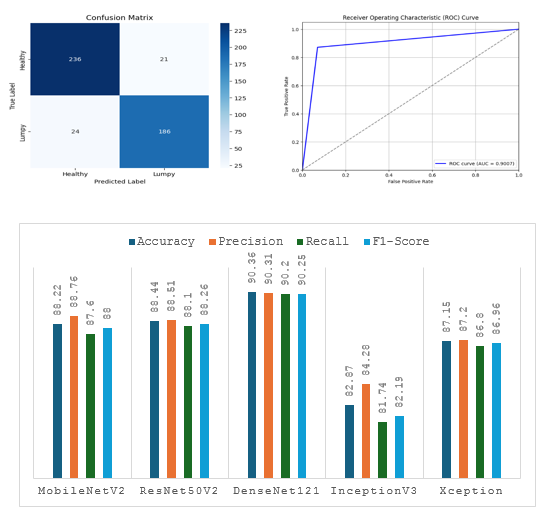Deep Learning-Based Detection of Lumpy Skin Disease in Livestock using CNNs
Main Article Content
Abstract
Lumpy Skin Disease (LSD) is a viral disease affecting cattle, resulting in a large economic loss in the livestock industry. Early and accurate detection is essential to prevent outbreaks and minimize its impact. In this study, we explore the use of deep learning models for automated LSD classification from cattle images. We evaluate five state-of-the-art convolutional neural networks (CNNs) including MobileNetV2, ResNet50V2, DenseNet121, InceptionV3, and Xception using transfer learning. The dataset consists of images categorized as either healthy or infected, with data augmentation applied to improve model generalization. Performance is assessed based on accuracy, precision, recall, and F1-score. Among the tested models, DenseNet121 achieved the highest accuracy of 90.36%, outperforming the other architectures. The results demonstrate the potential of deep learning for rapid and reliable LSD detection, which could aid veterinarians and farmers in early disease identification.
Downloads
Article Details

This work is licensed under a Creative Commons Attribution 4.0 International License.





